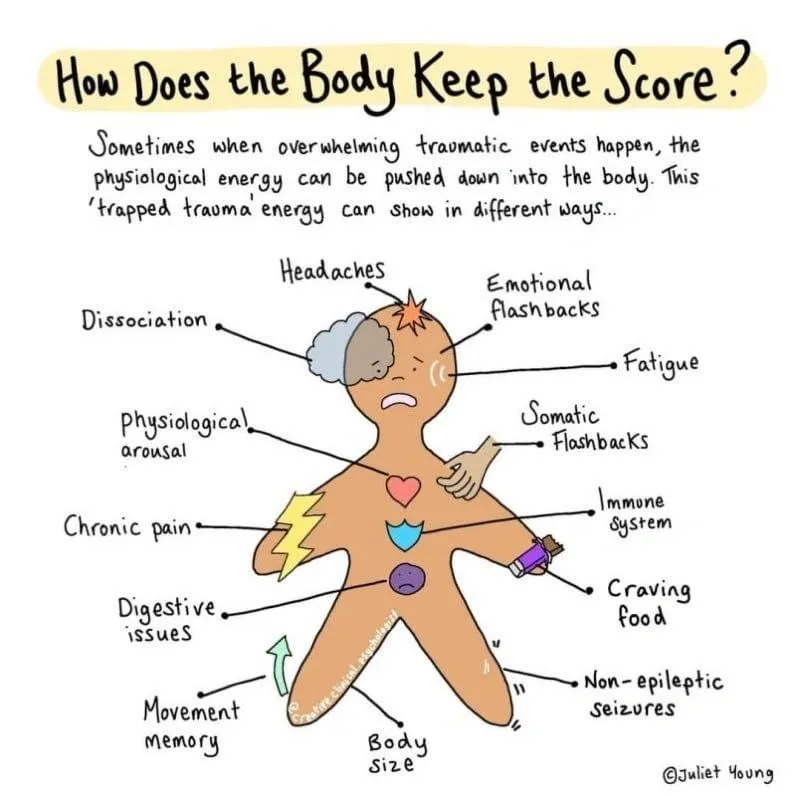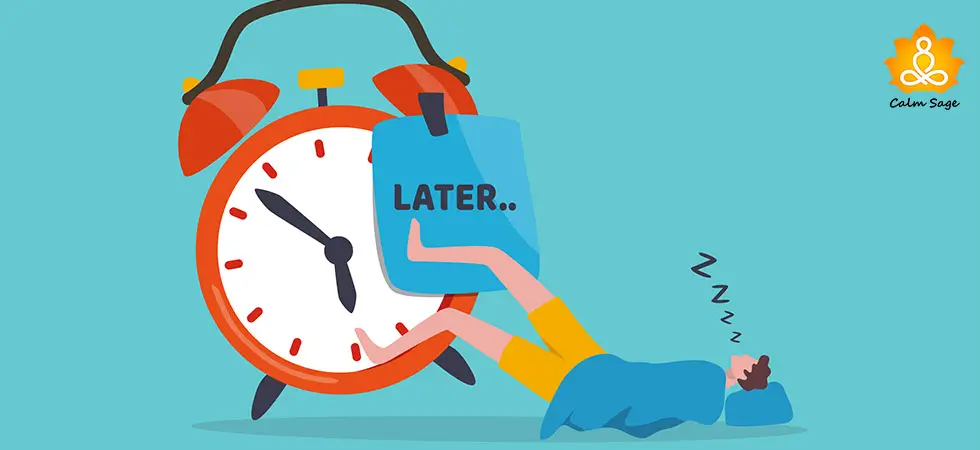How Trauma is Stored in The Body and How to Let Go

Trauma is a complex experience that can have a deep impact on your physical, emotional, and mental well-being. While the effects of trauma are mainly associated with the mind, psychologists have begun recognizing that trauma might not be just a mental or emotional experience. Trauma is also stored in the body, affecting our posture to physiological responses.
Trauma expert Bessel van der Kolk in his book “The Body Keeps the Score”, talks about how our mind may seem to “get over” the trauma, but it’s our body that remembers trauma the most.
Understanding how trauma is stored in the body and implementing methods to release stored trauma can be an important step toward healing and regaining a sense of control and balance over the body.
The Body’s Role in Trauma

When you experience a traumatic event – whether a car accident, physical abuse, or emotional distress – the body reacts by going into a state of alertness. This psychological response or the “fight or flight” response, involves the release of stress hormones such as cortisol and adrenaline, that prepares the body to either fight the threat or escape it.
While the stress response can be life-saving at the moment, if the trauma is not released properly, these physical reactions can become almost permanent in our body’s memory.
The body’s response to trauma involves various physiological changes such as;
- Tensed muscles
- Increased heart rate
- Shallow breathing
- High blood pressure

Eventually, these physical changes can become habitual, leading to chronic tension, pain, and compromised immunity. The body’s natural flow can become disrupted, causing a range of physical and emotional disturbances.
Traumatic experiences that are stored in the body are known as “somatic memory.” Somatic memory refers to the way the body retains sensory and emotional responses from traumatic events. These somatic memories can be triggered by various cues, such as sights, sounds, smells, or physical sensations that resemble the traumatic experience. When trauma is triggered, the body can react as if the trauma is happening again, even if you’re no longer in danger.
Somatic memory is tied to the concept of “body memory.” This is when the body unconsciously holds onto the emotional and physical sensations associated with a traumatic event. These sensations can manifest as;
- Chronic pain
- Muscle tension
- Numbness
- Discomfort in specific areas of the body
For instance, if you’ve been in a car accident, then you might develop chronic neck pain as your body continues to hold the tension and fear associated with the trauma.
How to Release Trauma Stored in the Body?

1.Cognitive Processing Therapy:
Cognitive Processing Therapy (CPT) works similarly to Cognitive Behavioral Therapy (CBT) in helping you identify and challenge unhelpful thoughts related to the trauma. This approach is one of the most recommended therapeutic approaches for treating trauma, post-traumatic stress, and even PTSD.
2.Body Awareness Techniques:
Practices such as body awareness techniques like mindfulness meditation and yoga can encourage you to develop awareness of body sensations and feelings. Observing these sensations without judgment can help you learn how to identify tension areas related to trauma.
3.Somatic Experiencing:
This is another therapeutic approach developed by Dr. Peter Levine, which focuses on releasing the physical tension and energy trapped in the body after a traumatic event. Somatic experiencing involves gentle movement and guided attention to help the body complete the “fight or flight” response that was interrupted during the trauma.
4.EMDR (Eye Movement Desensitization and Reprocessing):
EMDR can also help release trauma stored in the body. This therapy combines cognitive therapy with eye movements to help process traumatic memories. This allows the brain and the body to allow reprocessing traumatic experiences healthily.
5.Body-Centered Therapies:
Other therapies such as massage therapy, acupuncture therapy, and somatic therapy can also help in releasing trauma from body exercises. These therapies target specific areas of the body and the physiological response they have to trauma. These exercises aim to release tension, restore energy, and promote overall relaxation in the body.
6.Breathwork:
In other ways, deep breathing or conscious breathing can help release trauma stored in the body. Breathwork can help regulate the stress response and release muscle tension. Breathing exercises like breathwork, deep breathing, diaphragmatic breathing, Progressive Muscle Relaxation, and Pranayama can facilitate the release of trauma stored in the body by promoting feelings of relaxation.
Wrapping Up…
Trauma is not only a mental experience but a physical one too. What you experience during a traumatic event can not only affect your mental and emotional health but can also impact your physical health and that can manifest in body aches and pains over time. Addressing body trauma is one of the most important aspects of trauma healing.
By acknowledging and addressing repressed physical trauma, you can not only heal your body but your mind too. Releasing trauma stored in the body is a powerful (and effective) step in regaining control of yourself and your physiological responses to trauma.
When you release trauma stored in your body, you can find relief from chronic pain and move forward in life that is no longer overshadowed by painful experiences and memories.
If you or a loved one is struggling with processing repressed trauma, then it is recommended you seek professional help from experienced trauma therapists.
I hope this article helped you understand how trauma affects the body and how trauma is stored in the body. Let me know if you found the above-listed ways to release trauma stored in the body helpful in the comments below.
Take Care!




















